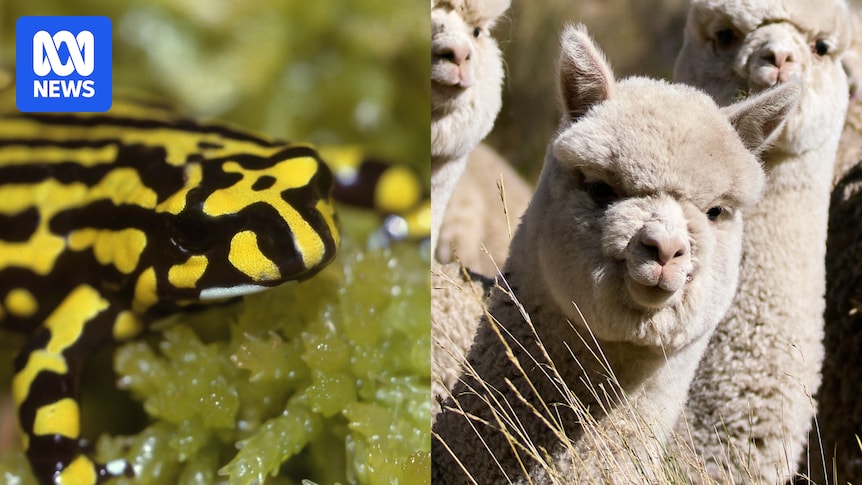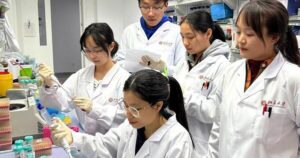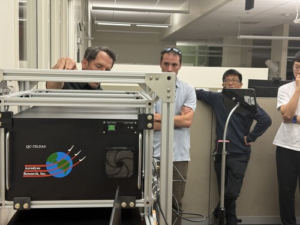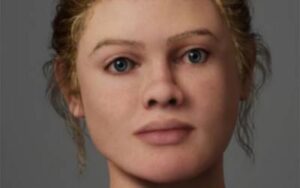
Frogs that are part alpaca and other genetically engineered wildlife could soon be running and hopping around Australia. Advances in gene editing tools now allow scientists to alter the DNA of living organisms, opening new possibilities for addressing challenges such as disease, invasive species, and climate change. Genetically altered mosquitoes, quolls, and cane toads may soon be released into the Australian wild.
In the case of Australia’s 200-plus frog species, this technology could potentially render them resistant to a deadly disease introduced in the 1970s. The chytrid fungus, a highly virulent pathogen, has been linked to the extinction of six or possibly seven Australian frog species. It causes chytridiomycosis, a disease that damages a frog’s skin, affecting its ability to breathe and absorb water.
Innovative Solutions: Alpacas and Genetic Engineering
University of Melbourne zoologist Stephen Frankenberg is exploring genetic engineering as a means to protect frogs from this lethal infection. His approach involves alpacas, a woolly herd animal from the Peruvian mountains, which have become significant in medical research due to their unique immune system. Alpacas produce tiny immune particles called “nanobodies” that can be used to protect other species from diseases.
These nanobodies can be introduced into the DNA of other organisms through “transgenes.” Using CRISPR-Cas9, a precise genetic editing tool, Dr. Frankenberg plans to introduce alpaca-derived nanobodies into frogs, potentially offering them inheritable resistance to the chytrid fungus.
“That can then be used in a genetic engineering solution to chytrid infection,” Dr. Frankenberg explained. “Then for each frog species, you could simply inject that [engineered] fragment into the eggs of that frog species … and then breed them up in captivity.”
US gene technology company Colossal is funding this project with $3 million over three years, aiming to apply genetic engineering not only to living species but also to bring back extinct animals like mammoths and dodos.
De-Extinction: A New Frontier for Conservation?
The last known thylacine, or Tasmanian tiger, died in 1936. Andrew Pask from the University of Melbourne, who is also Colossal’s chief biology officer, envisions thylacines roaming Tasmania once more. His team is working on sequencing the thylacine genome using historical samples, with plans to recreate the species through millions of genetic edits to a living relative, such as the fat-tailed dunnart.
This de-extinction technology could also aid in conserving other native animals. Dr. Frankenberg has already edited dunnart cells to resist the toxin of invasive cane toads, a technique that could be applied to the northern quoll, a species threatened by the cane toad’s presence.
“It could be a couple of years really to get to the point of being able to produce quolls that are resistant to cane toads,” Dr. Frankenberg said. “It’s such a tiny edit and something that could arise naturally in the wild.”
Potential Risks and Ethical Considerations
While genetic editing offers exciting possibilities, it also presents risks. Deakin University ecologist Euan Ritchie cautions that altering one species could have unforeseen impacts on entire ecosystems. For instance, making northern quolls resistant to cane toads might lead to an overpopulation of quolls, affecting other species sharing the same habitat.
“What if all of a sudden because cane toads are edible to all these northern quolls, you end up with huge numbers of northern quolls?” Professor Ritchie questioned. “And how might they affect other species that also share that environment?”
Australia’s history with biological controls includes both successes and failures, such as the introduction of rabbit viruses versus the catastrophic cane toad. Dr. Frankenberg suggests mitigating risks by initially releasing gene-edited quolls on islands to monitor their ecological impact before considering mainland introductions.
The potential for genetic engineering in conservation is vast, but it requires careful consideration of ecological balance and ethical implications. As technology advances, the conversation around its application in wildlife conservation continues to evolve, promising both hope and caution for the future of biodiversity.







